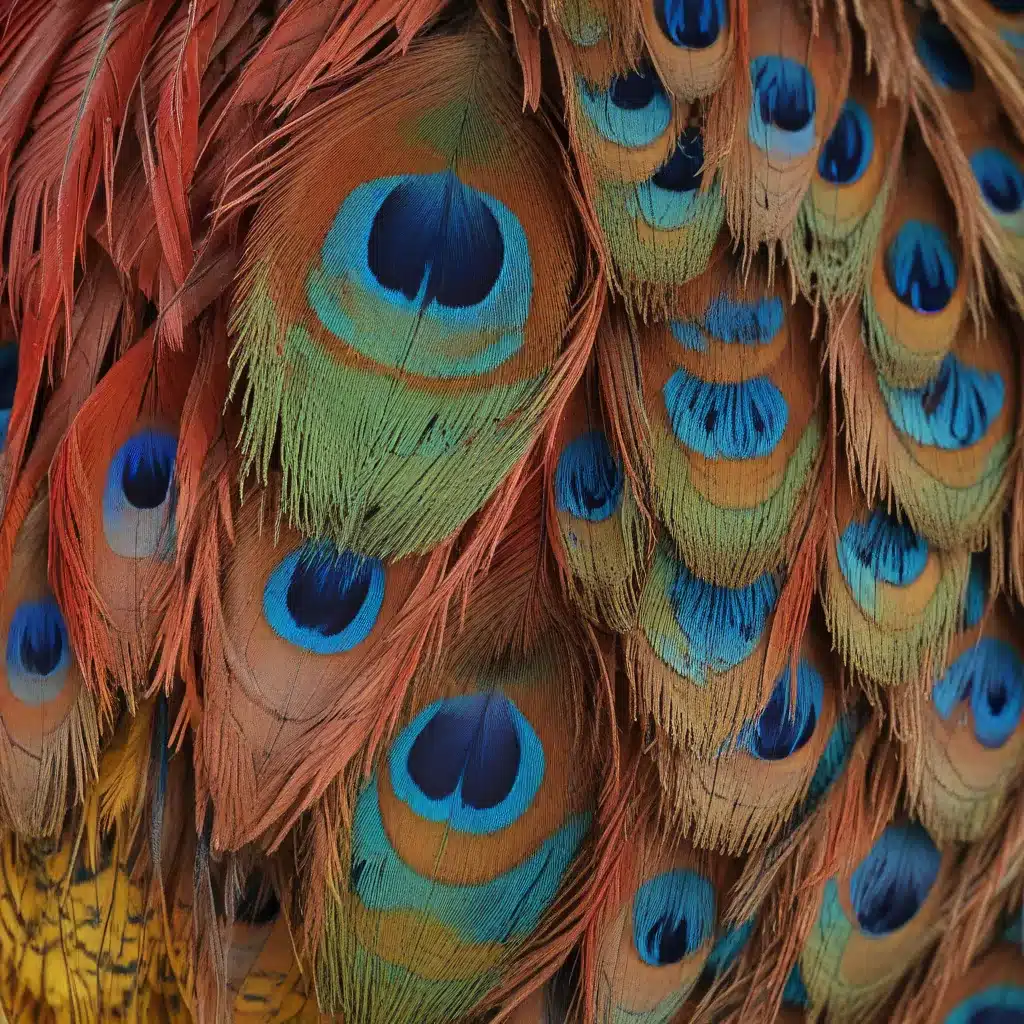
The vibrant, well-groomed feathers of a healthy bird are a true delight to behold. As an experienced avian caretaker, I’ve had the privilege of working with a wide variety of bird species and witnessing the intricate beauty of their plumage up close. However, feather and skin disorders are all too common in pet birds, posing challenges for both owners and veterinary professionals.
Avian Integumentary System
To fully understand feather disorders, it’s important to first appreciate the remarkable structure and function of a bird’s integumentary system. Feathers, the defining feature of avian species, are complex keratinized structures composed of a central shaft (rachis) with interconnected barbs and barbules. This unique architecture not only provides insulation and aerodynamic lift, but also serves as a canvas for stunning visual displays and intricate communication cues.
Feather Structure and Function
Feathers are produced within specialized follicles in the skin, growing outward in a precise, organized manner. Each feather type – from the delicate down feathers to the sturdy flight feathers – has a specific role to play in a bird’s overall health and well-being. Proper feather development, alignment, and maintenance through regular preening are essential for optimal thermoregulation, flight, and social behaviors.
Plumage Types and Patterns
The diverse array of feather patterns, colors, and textures found across the avian kingdom is truly awe-inspiring. From the bold, vibrant hues of parrots to the intricate barring and spotting of raptors, a bird’s plumage is a reflection of its species, age, sex, and even social status. Disruptions to this delicate plumage can have far-reaching consequences for a bird’s health and well-being.
Feather Growth and Molting
Feathers are not permanent structures – they are continuously replaced through a process called molting. Depending on the species, birds may undergo a complete, or partial, molt annually, shedding and regrowing their feathers in a methodical, synchronized manner. Understanding the normal molting patterns for a given bird is crucial for distinguishing between natural feather loss and potential underlying health issues.
Common Feather Disorders
When a bird’s integumentary system is compromised, a wide range of feather and skin disorders can arise. From infectious conditions to behavioral issues, these plumage problems can have a significant impact on a bird’s overall health and quality of life.
Feather Loss and Abnormalities
One of the most common feather-related issues seen in pet birds is excessive or abnormal feather loss. This can manifest as bald patches, thinning plumage, or even complete feather loss (known as alopecia). Feather cysts, in which a growing feather becomes trapped within the follicle, can also lead to unsightly, painful swellings.
Infectious Feather Conditions
Bacterial, fungal, and parasitic infections can all wreak havoc on a bird’s feathers and skin. Conditions like feather folliculitis, ringworm, and mite infestations can cause irritation, feather damage, and even systemic illness if left untreated.
Environmental and Nutritional Factors
Seemingly innocuous factors in a bird’s environment or diet can contribute to feather and skin problems. Inadequate humidity, lack of exposure to natural sunlight, and nutritional deficiencies can all disrupt the normal growth and maintenance of a bird’s plumage.
Diagnostic Approaches
Addressing avian feather disorders requires a comprehensive diagnostic approach, leveraging both visual assessment and laboratory testing.
Visual Inspection and Evaluation
A thorough physical examination, including close inspection of the bird’s feathers and skin, is the first step in identifying potential issues. An experienced avian caretaker or veterinarian can often spot signs of infection, trauma, or abnormal feather growth just by closely observing the bird.
Feather Sample Analysis
In some cases, collecting and analyzing a sample of the affected feathers can provide valuable insights. Microscopic examination, DNA testing, and even biopsy of the feather follicle can help pinpoint the underlying cause of the problem.
Veterinary Assessment
For more complex or persistent feather disorders, consultation with an avian veterinarian is essential. These specialists can perform a battery of diagnostic tests, from blood work to imaging, to rule out systemic diseases and develop a targeted treatment plan.
Treatment Strategies
Addressing the root cause of a feather disorder is key to successfully managing and resolving the problem. A multifaceted approach, combining supportive care, environmental modifications, and targeted medical interventions, is often required.
Addressing Underlying Causes
Whether the issue is infectious, nutritional, or behavioral in nature, identifying and addressing the underlying cause is the first step in treatment. This may involve antimicrobial therapies, dietary adjustments, or environmental enrichment, depending on the specific diagnosis.
Supportive Care and Management
Providing appropriate housing, maintaining optimal humidity and temperature, and ensuring adequate natural lighting and opportunities for bathing can all play a vital role in supporting a bird’s feather health and promoting natural grooming behaviors.
Surgical and Medical Interventions
In some cases, more aggressive interventions may be necessary, such as the surgical removal of feather cysts or the use of medications to manage hormonal imbalances or control feather-damaging behaviors.
By working closely with an experienced avian veterinarian and implementing a comprehensive treatment plan, many feather disorders can be successfully managed, allowing birds to regain their vibrant, healthy plumage. As an avian caretaker, I’ve seen firsthand the transformative power of proper diagnosis and treatment, and I’m committed to sharing this knowledge to empower fellow bird enthusiasts and promote the well-being of our feathered friends.
For more information on avian health and care, be sure to visit the Mika Birds Farm blog at mikabirdsfarm.com. Our team of experts is dedicated to providing comprehensive, evidence-based resources to help bird owners navigate the joys and challenges of avian companionship.


